The recent State visit to China by General Secretary and President To Lam is considered an important milestone in building the Vietnam-China Community of Shared Future of strategic significance.
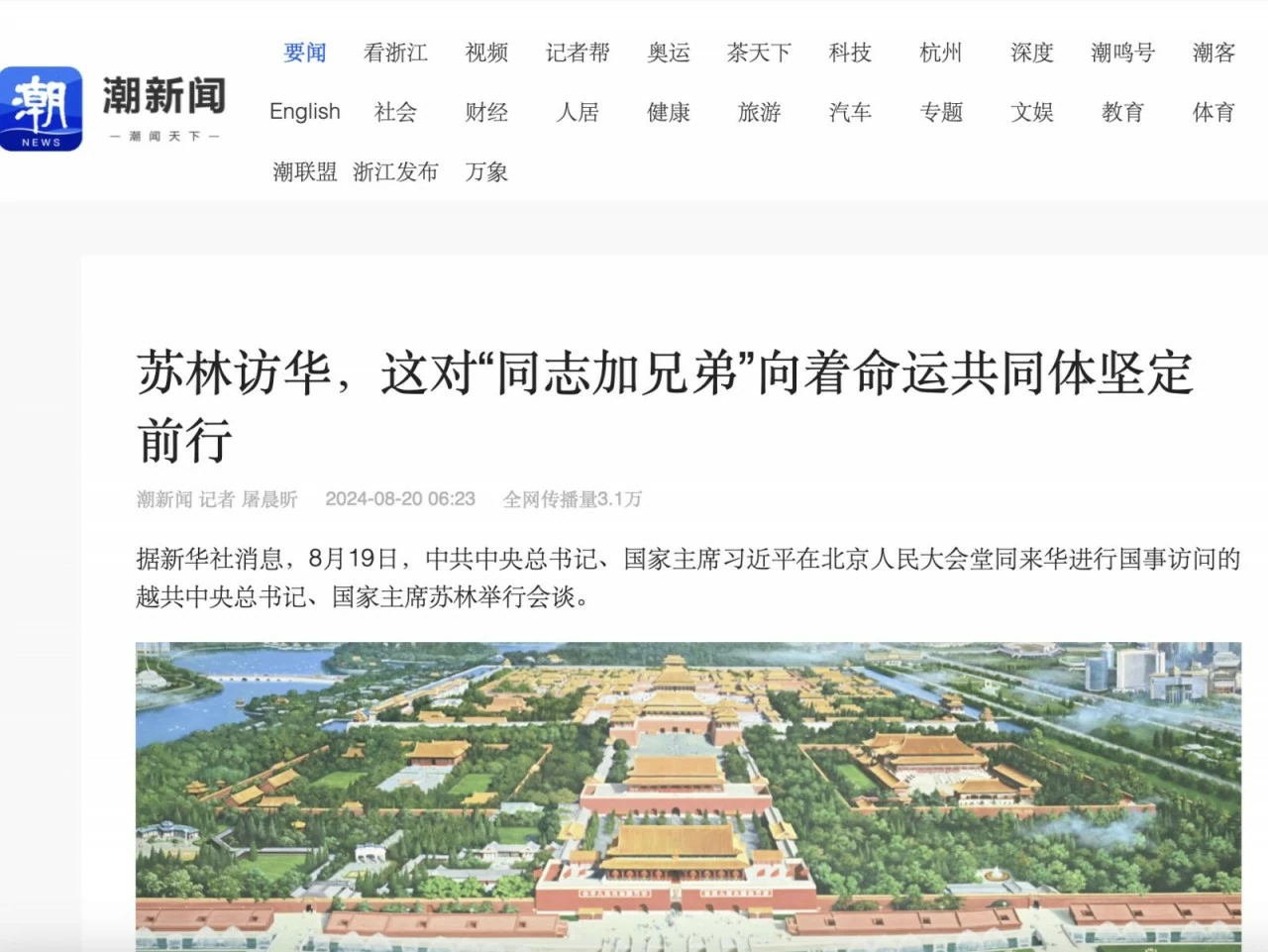 |
| Article on Tide News. (Screenshot) |
Professor Hua Liping, Director of the Southeast Asian Studies Center at the Institute for Global and Asia-Pacific Strategic Studies (CASS), Chinese Academy of Social Sciences, wrote an article on The Tide News stating that, as the head of the Vietnamese Party and State, the recent visit of General Secretary and President To Lam further highlighted the unique nature and important role of the Vietnam-China relationship.
"Both comrades and brothers"
The “special” characteristic that Mr. Hua Li Ping mentioned lies in the fact that Vietnam and China are connected by mountains and rivers, “both comrades and brothers”. The two countries have the same cultural background, similar political institutions, have experienced historical changes and development tasks, have close economic and trade links, and together build a Vietnam-China Community of Shared Future of strategic significance. The relationship between the two Parties always plays an important role in the overall relationship between the two countries.
Professor Hua Li Ping emphasized that this visit by General Secretary and President To Lam once again sends a message that Vietnam attaches importance to developing relations between the two Parties and two countries. At the same time, China clearly identifies Vietnam as a top priority in its regional foreign policy. He believes that the visit will continue to promote the building of the Vietnam-China Community of Shared Future in depth and substance.
Professor Hua Li Ping commented that Vietnam and China are two neighboring socialist countries. During the process of gaining independence and national liberation, the two countries wholeheartedly supported and helped each other.
General Secretary and President To Lam chose Guangzhou as the first destination during his visit to China, demonstrating the inheritance of historical traditions and revolutionary currents.
The year 2024 marks the 100th anniversary of President Ho Chi Minh's revolutionary activities from Moscow (Soviet Union) to Guangzhou (China) in 1924 as a representative of the Communist International. President Ho Chi Minh's revolutionary imprints in Guangzhou in the early years are closely related to the founding of the Communist Party of Vietnam. Major General Nguyen Son of Vietnam participated in the Long March of the Chinese Red Army. Mr. Hua Liping pointed out that 2024 marks the 70th anniversary of the Dien Bien Phu victory, during which China provided Vietnam with a lot of material, technical and other support.
At a meeting in Guangzhou on August 18, General Secretary and President To Lam met with Chinese medical staff who had supported Vietnam. Ms. Vu Thuc Hue, 77 years old, a former medical staff who supported Vietnam at Nam Khe Son Hospital, shared unforgettable memories in her life. In 1968, the Chinese government established Nam Khe Son Hospital in Guilin, Guangxi, specializing in treating the wounded and sick during the Vietnamese people's resistance war against the US to save the country. During 8 years of operation, Nam Khe Son Hospital devotedly treated 5,432 Vietnamese patients.
This scholar also pointed out that, during the resistance war against the US to save the country, China gave Vietnam countless help, demonstrating a special friendship of “both comrades and brothers”. At the same time, it demonstrated the traditional revolutionary friendship between the two countries in the struggle for independence and national liberation, demonstrating the spirit of “in me there is you, in you there is me” of the Community of Sharing the Future.
Therefore, Mr. Hua Li Ping affirmed that General Secretary To Lam's visit demonstrates the historical connection, as well as the desire to inherit the revolutionary flow and the tradition of friendship between the two Parties. This is an important political foundation to strengthen the Vietnam-China Community of Shared Future.
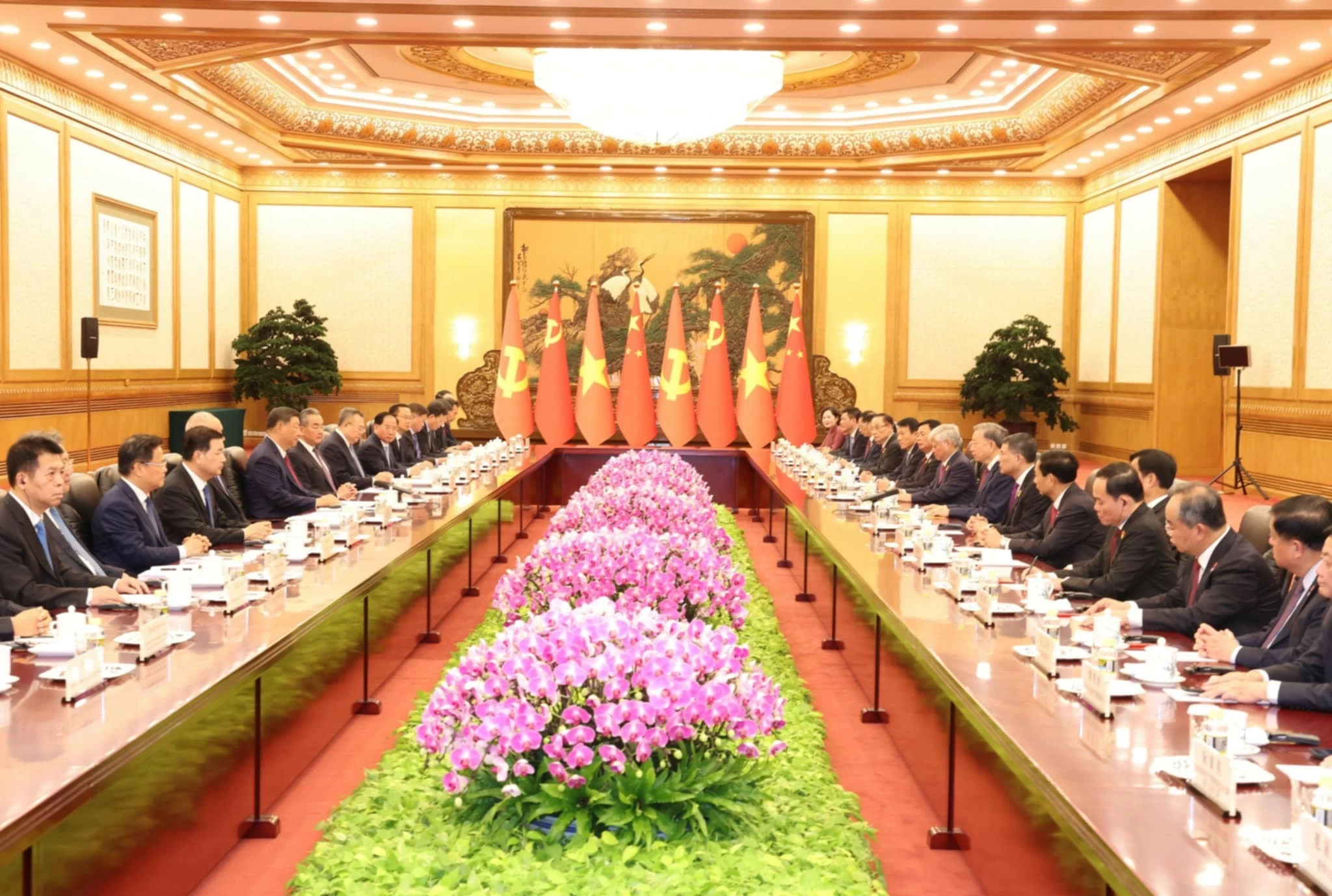 |
| General Secretary and President To Lam held high-level talks with General Secretary and President of China Xi Jinping on August 19. (Source: VNA) |
Guidelines for building a community that shares the future
In 2008, Vietnam and China established a framework for a comprehensive strategic cooperative partnership. Notably, Vietnam was the first ASEAN country to establish a comprehensive strategic partnership with China.
Professor Hua Liping commented that China has many partner countries around the world and the partnership is divided into many levels. However, the Comprehensive Strategic Cooperative Partnership is one of the highest levels, demonstrating China's diplomatic importance to Vietnam. Therefore, last year, the two countries upgraded their relationship to a Comprehensive Strategic Cooperative Partnership, the Vietnam-China Community of Shared Future, which has strategic significance, reflecting the upgrade in the relationship between the two countries.
According to Mr. Hua Li Ping, the Vietnam-China Community of Shared Future is the overall goal in developing relations between the two countries, and the Comprehensive Strategic Cooperative Partnership is an important guideline to build this goal.
In addition, the two Parties need to maintain the spirit of friendship, inherit traditions, remember the common mission and in the important development stage of each country, Vietnam and China need to determine the right direction for building the Vietnam-China Community of Shared Future, consolidating the "6 more" development model: Higher political trust; more substantive defense and security cooperation; deeper substantive cooperation; more solid social foundation; closer multilateral coordination; better control and resolution of disagreements. Mr. Hua Liping said that these 6 directions of cooperation are the guiding principle for building the Vietnam-China Community of Shared Future.
The foreign policy of General Secretary and President To Lam is a topic of public interest. According to Mr. Hua Loi Binh, during the visit to General Secretary and President To Lam, Vietnam consistently adheres to the foreign policy of independence, self-reliance, peace, friendship, cooperation and development, diversification and multilateralization of foreign relations. This shows that Vietnam will maintain the diplomatic ideology imbued with the Vietnamese bamboo identity of the late General Secretary Nguyen Phu Trong, pursuing a balanced and diverse diplomacy.
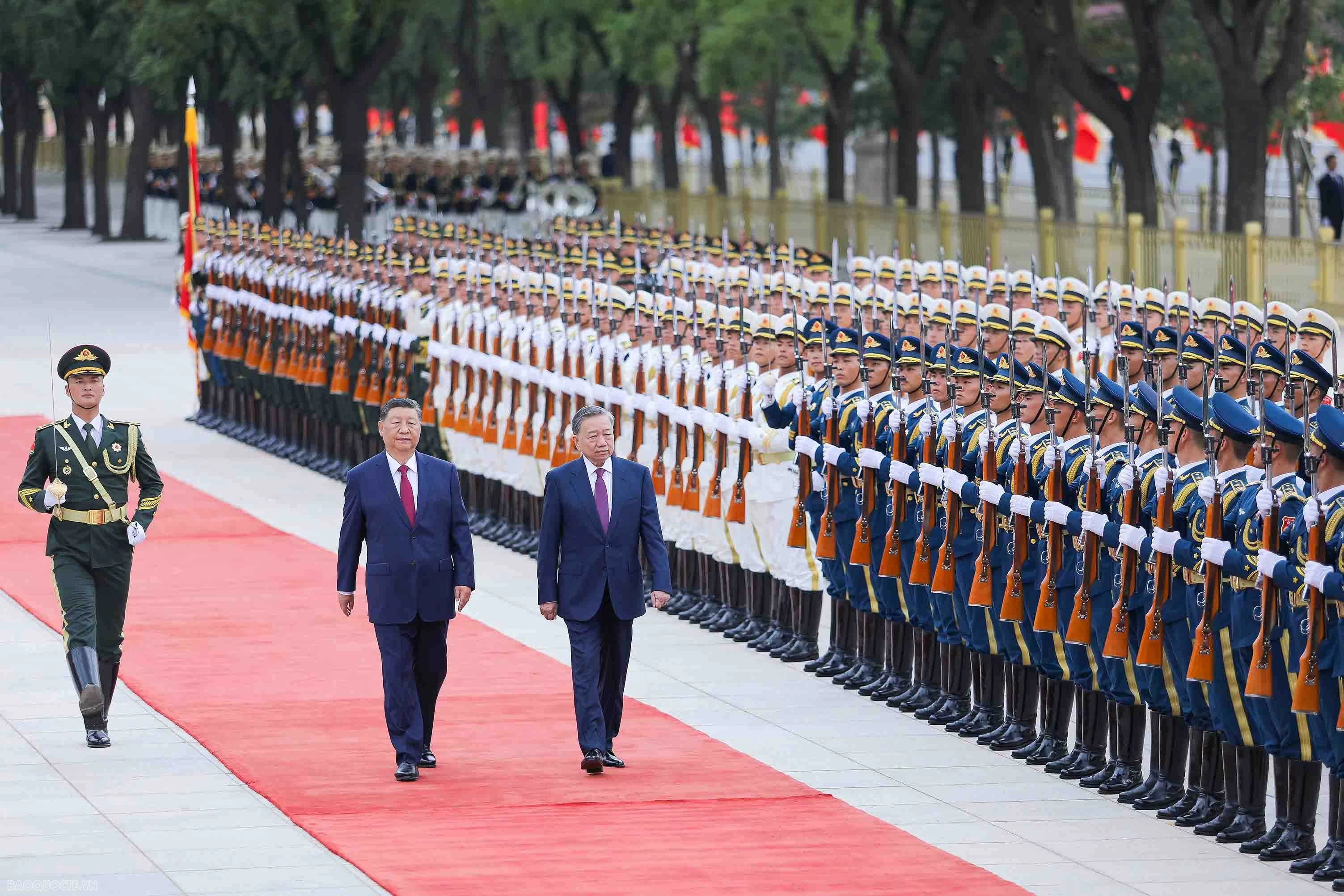 |
| General Secretary and President To Lam reviews the honor guard at the official welcoming ceremony on August 19. (Photo: Nguyen Hong) |
Strengthening real connections
During the recent visit, the two sides actively discussed expanding cooperation in connecting the “Belt and Road” initiative with the “Two Corridors, One Belt” framework; accelerating the progress of connecting railway, highway and border gate infrastructure; enhancing smart connectivity in the customs sector; and jointly building a safe and stable supply and production chain.
After the talks, General Secretary and President To Lam and General Secretary and President of China Xi Jinping witnessed the two countries' departments, ministries, branches and localities signing cooperation documents during the visit in the fields of party schools, agricultural product import and export, radio and television, press and communication, healthcare, infrastructure, trade and economy, industry, banking, etc.
In a statement on August 16, Foreign Minister Bui Thanh Son said that this state visit focuses on implementing agreements signed by the two countries as well as new substantive cooperation results achieved, especially in areas of mutual interest such as connecting railway infrastructure.
In recent years, economic and trade cooperation between Vietnam and China has developed strongly. Since 2004, China has always been Vietnam's largest trading partner and main source of foreign investment, while Vietnam is also China's largest trading partner in Southeast Asia.
Two-way trade has surpassed the $200 billion mark for two consecutive years. In the first seven months of this year, trade between China and Vietnam increased by 25% year-on-year to $112 billion. The two sides are expected to achieve more cooperation results in the fields of connectivity, agricultural products, digital economy and supply chain.
At the same time, among the potential cooperation projects being implemented between the two countries, the plan to build three railway lines (upgrading two cross-border railway lines and building a third coastal railway line) has attracted much public attention.
Mr. Hua Li Ping commented that at the end of last year, Vietnam and China reached a consensus on promoting the construction of railways. In the future, there are expected to be more feasibility studies to strengthen the economic foundation for the integration of interests of the Vietnam-China Community of Shared Future.
Notably, in recent times, security and defense cooperation between Vietnam and China has been progressing steadily. In April 2024, the two countries held the 8th border defense friendship exchange and signed a memorandum of understanding on establishing a hotline between the Vietnam Navy and the Southern Theater Command of the People's Liberation Army of China; the coast guard forces of the two countries also conducted joint patrols in the Gulf of Tonkin. This cooperation not only helps to enhance bilateral defense relations and maritime security protection capacity but also contributes to building a Community of Shared Future.
In addition, Professor Hua Li Ping pointed out that Vietnam and China do not avoid issues and disagreements at sea, but instead advocate resolving and controlling disagreements on the basis of mutual understanding and respect, thereby maintaining a peaceful and stable bilateral relationship in the region.
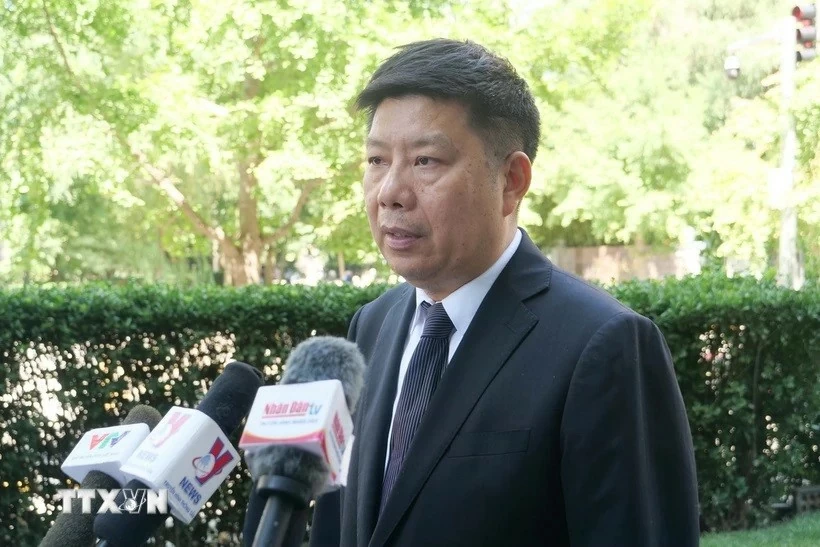 |
| Professor Xu Liping, Director of the Center for Southeast Asian Studies, Institute for Global and Asia-Pacific Strategic Studies (CASS), Chinese Academy of Social Sciences. |
Source: https://baoquocte.vn/chuyen-gia-trung-quoc-moi-lien-ket-lich-su-hien-tai-va-tuong-lai-qua-chuyen-tham-cua-tong-bi-thu-chu-tich-nuoc-to-lam-283468.html


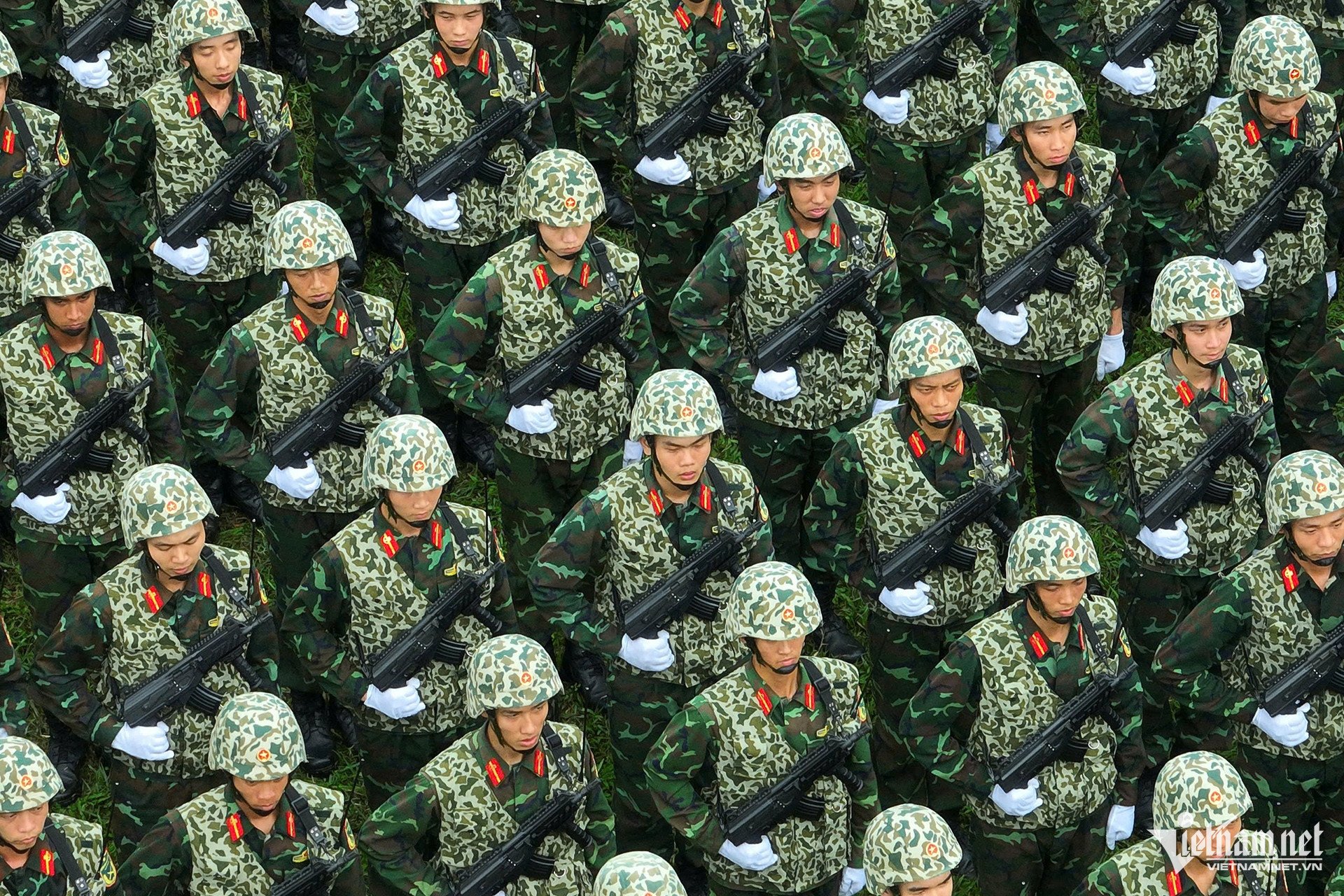


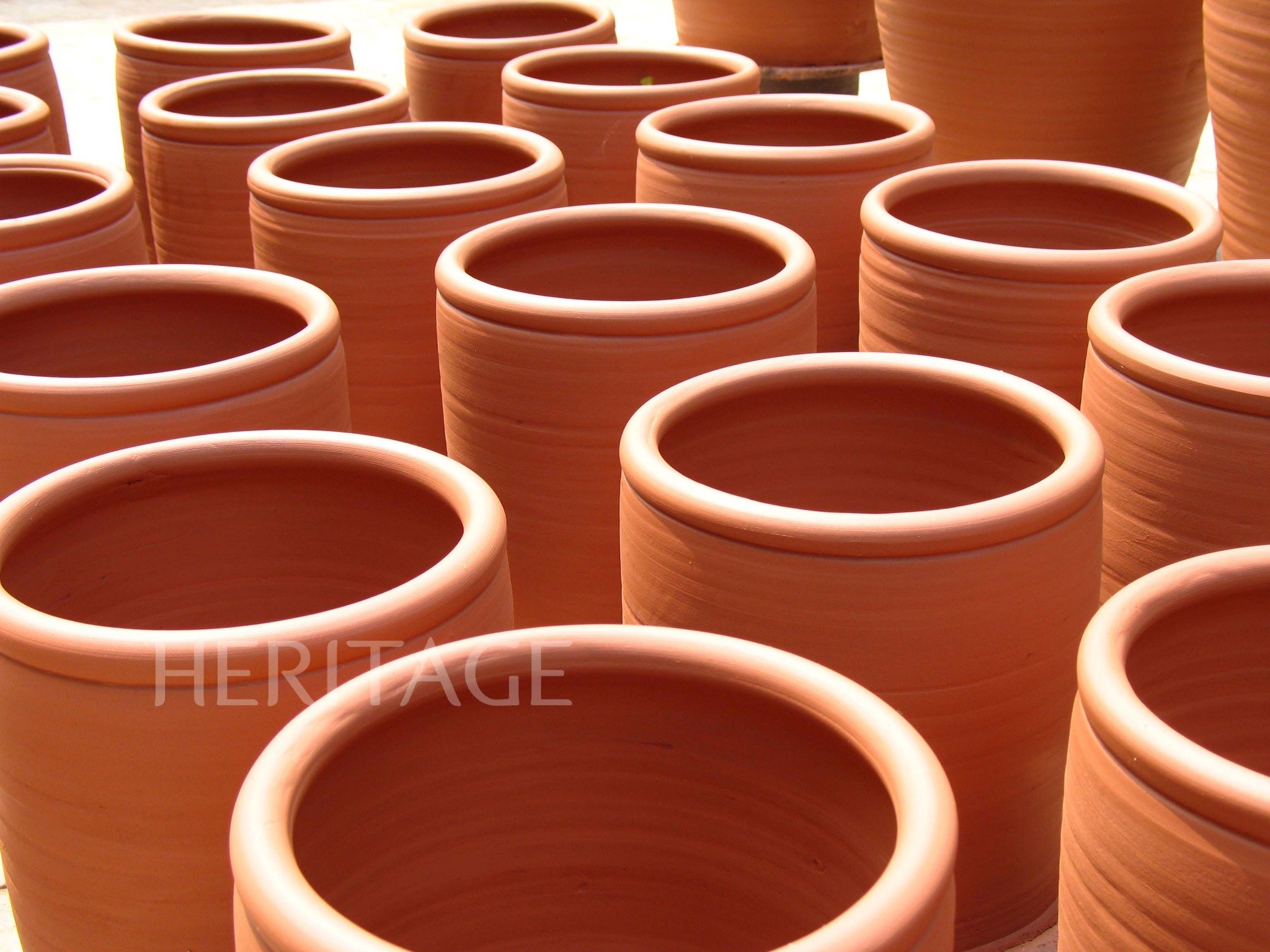


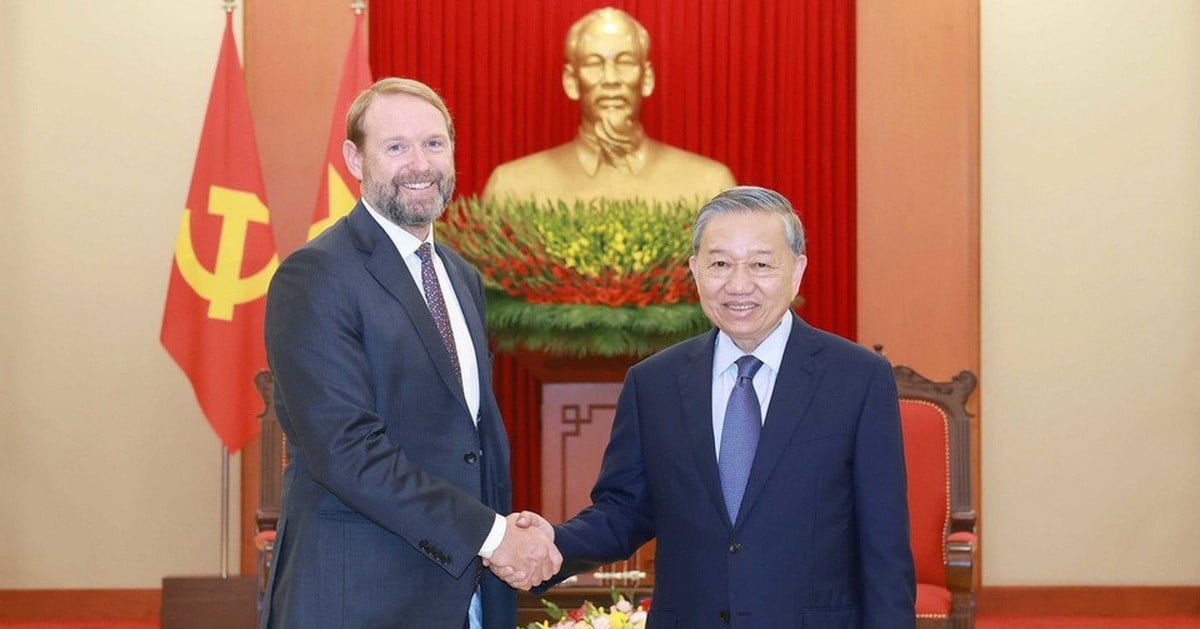




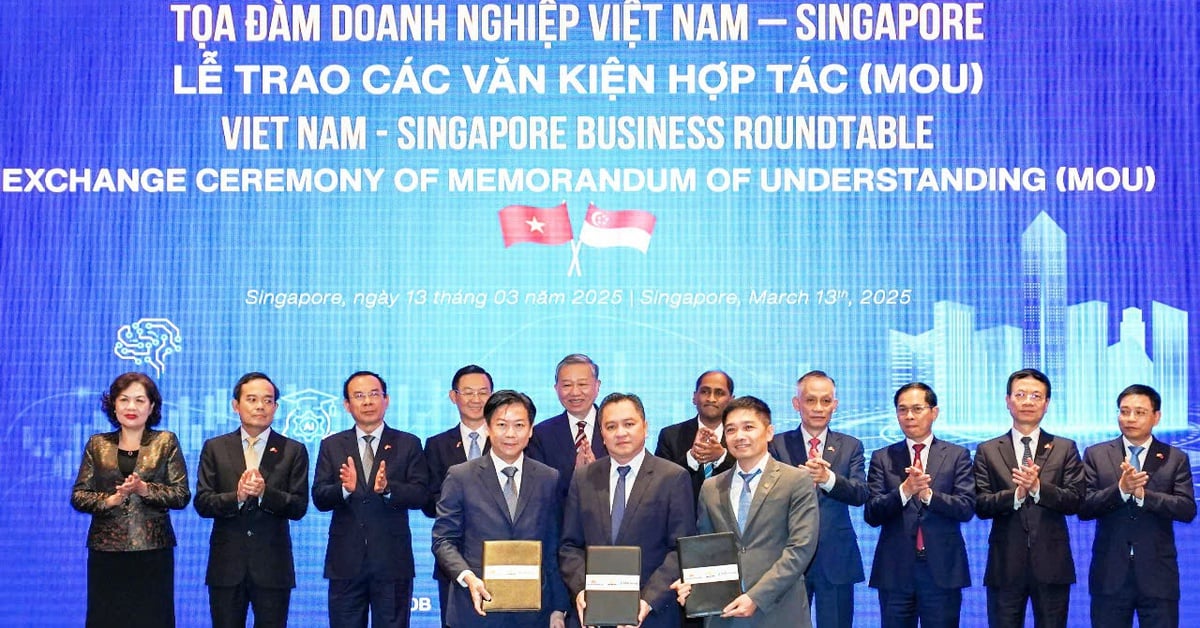
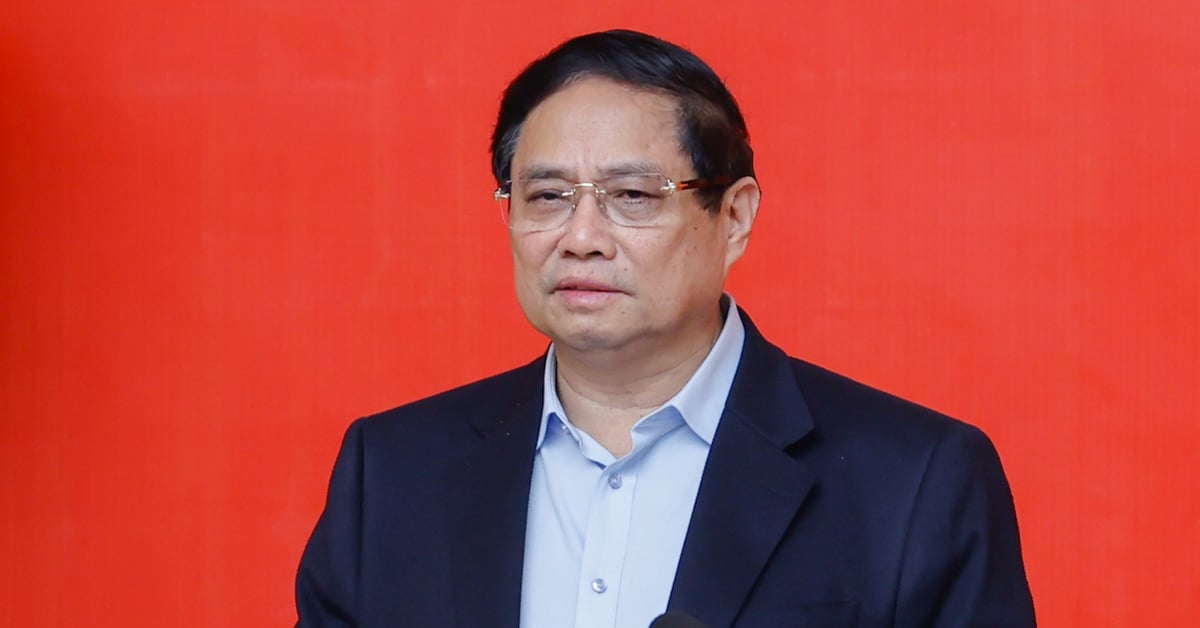
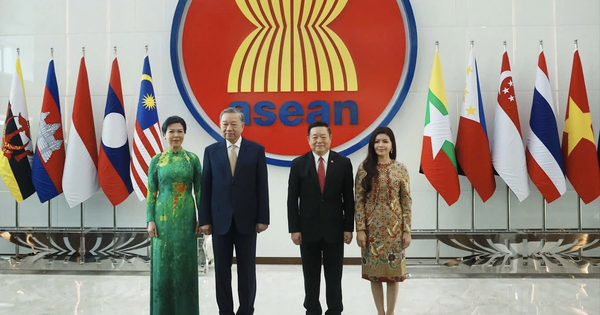

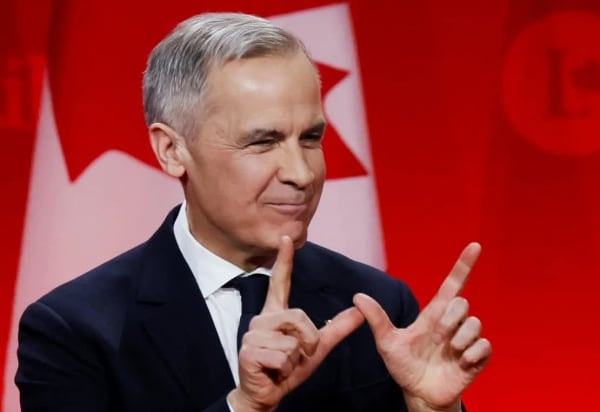
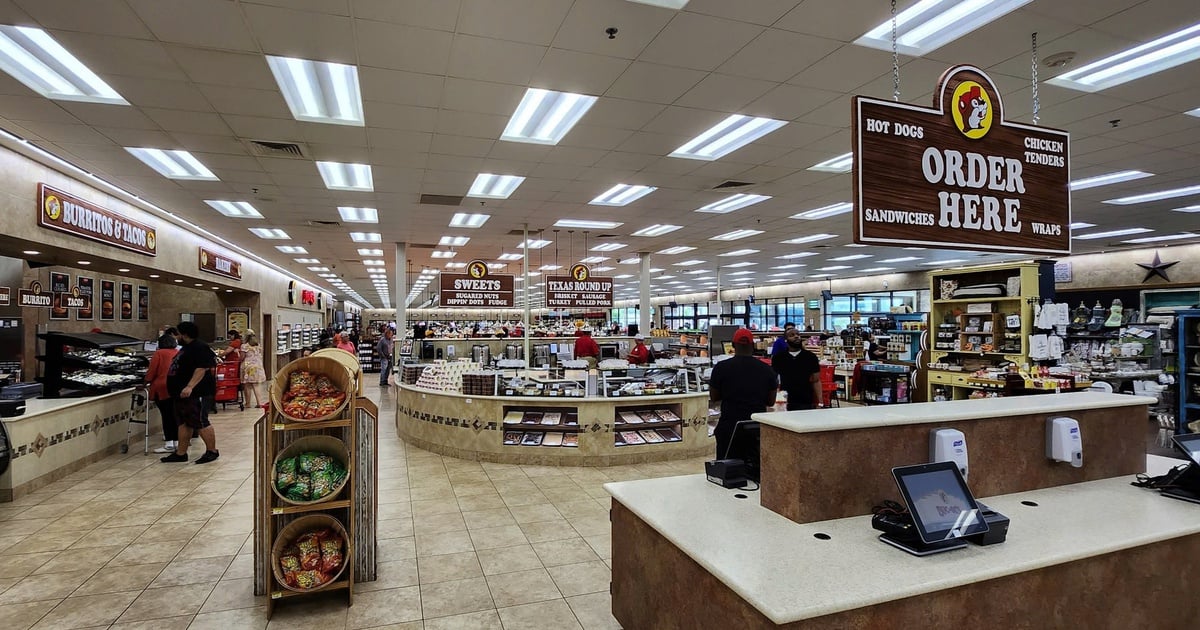




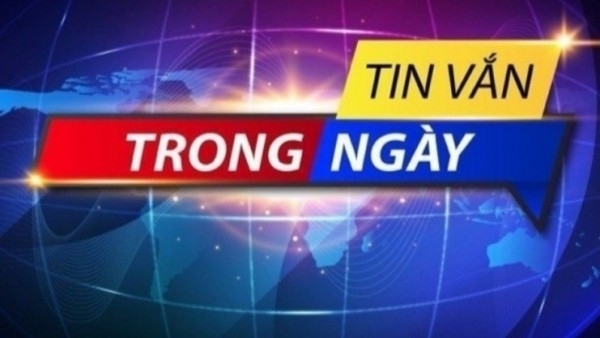




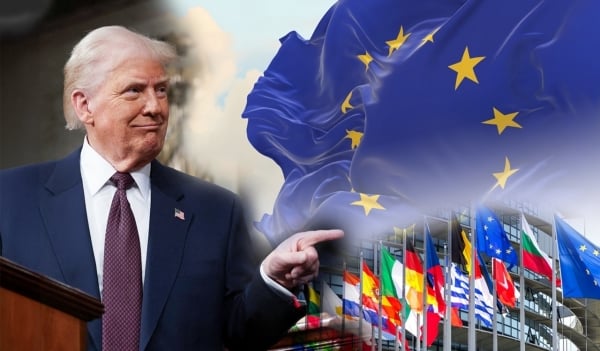

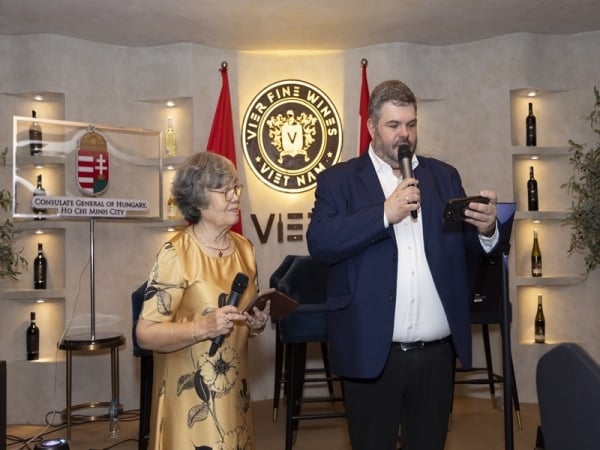











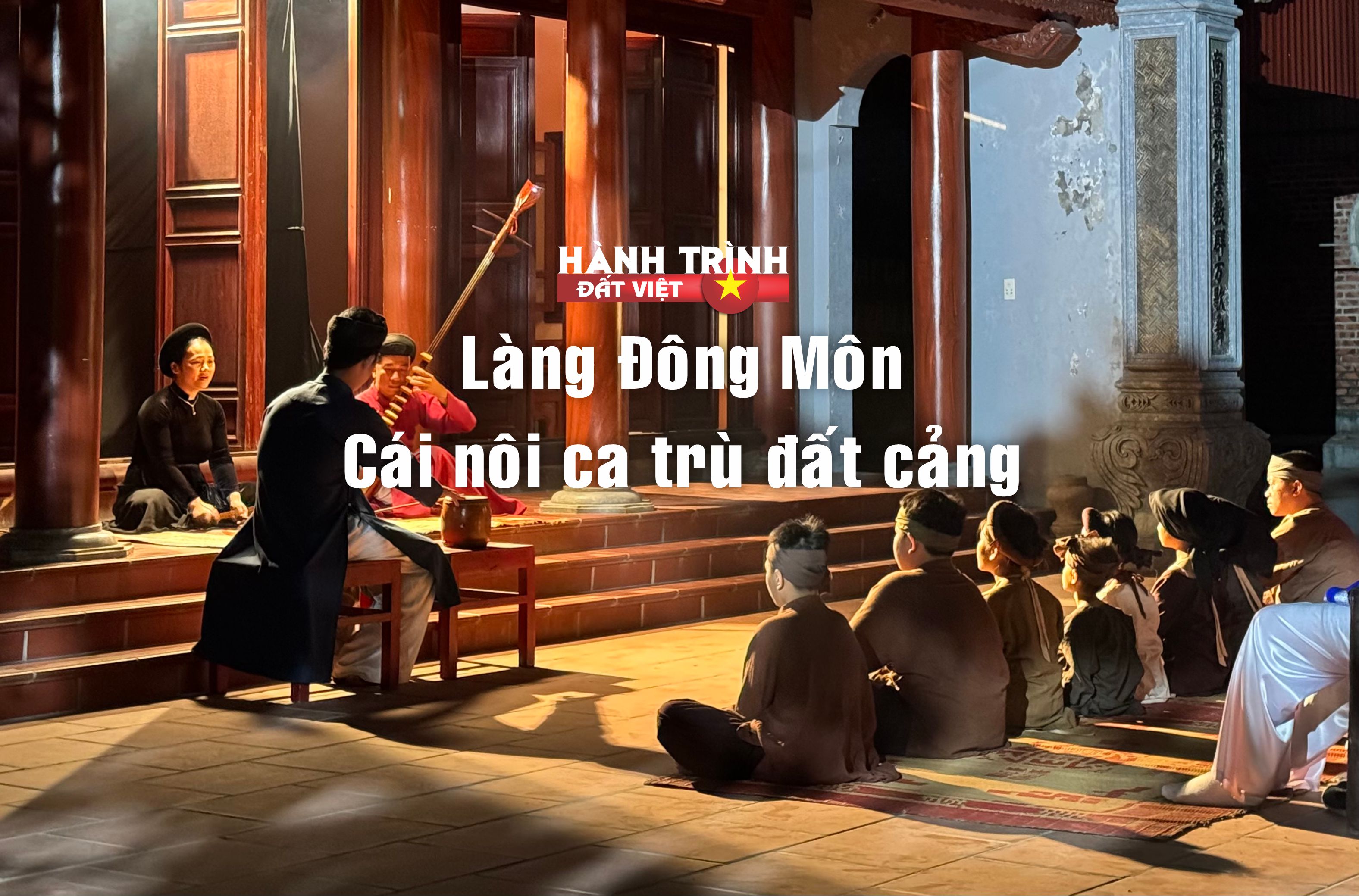

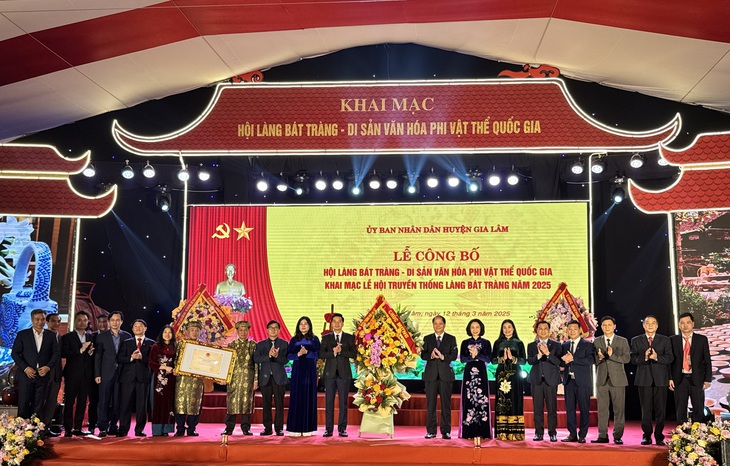
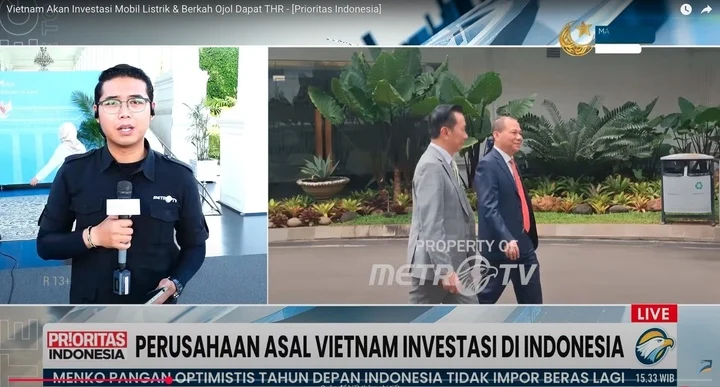

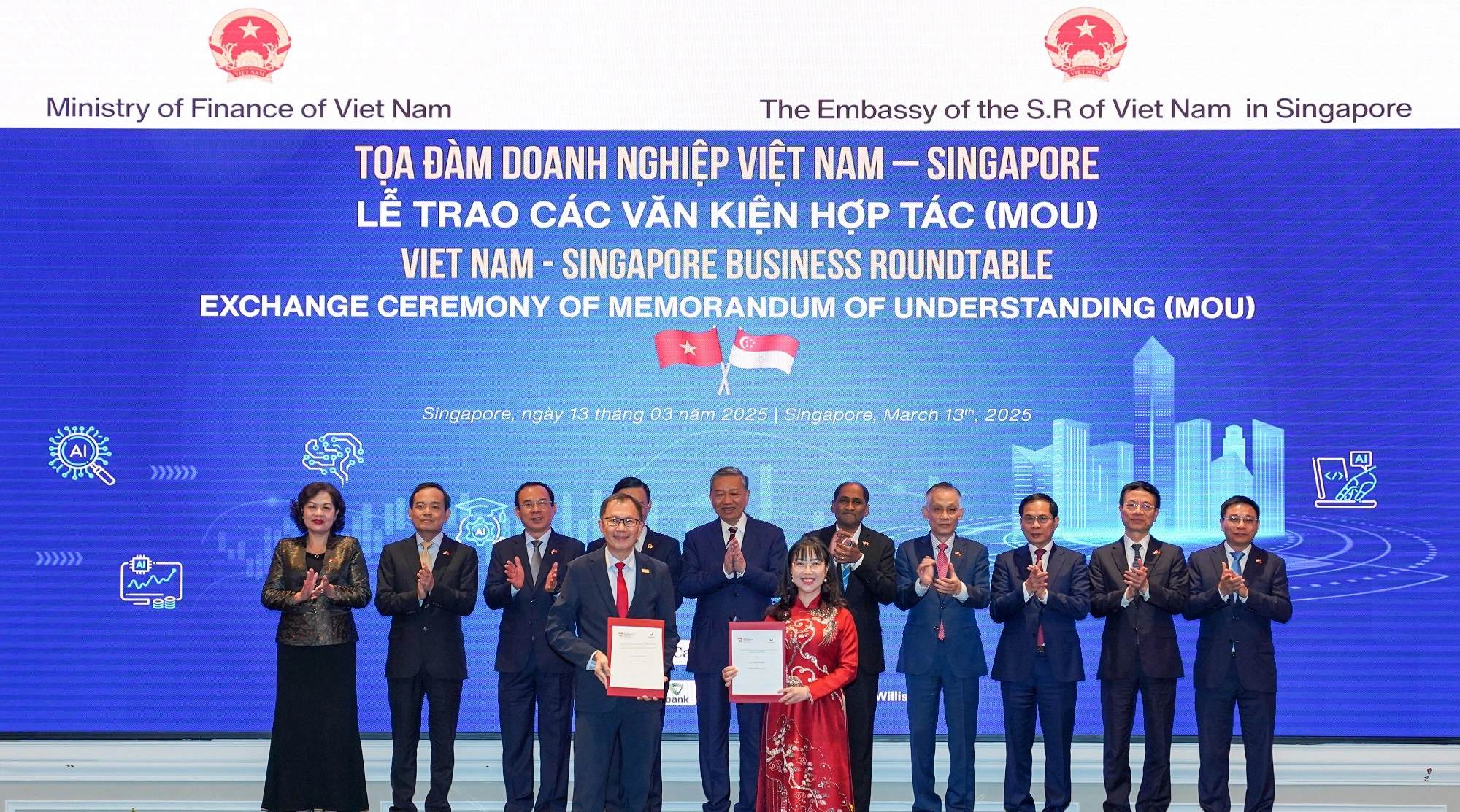
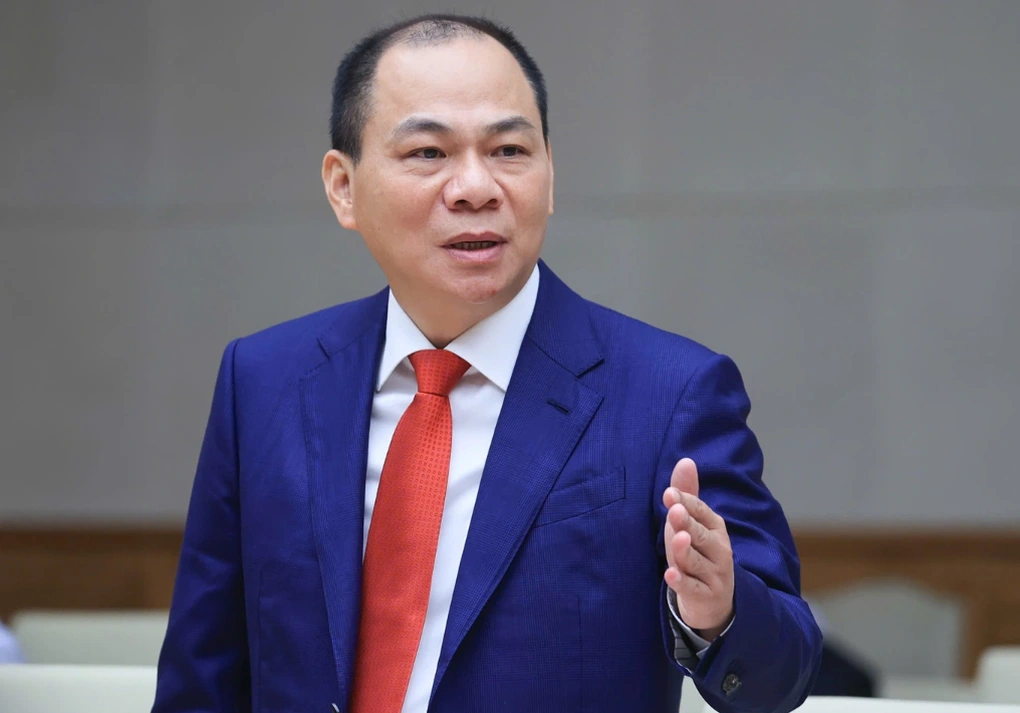

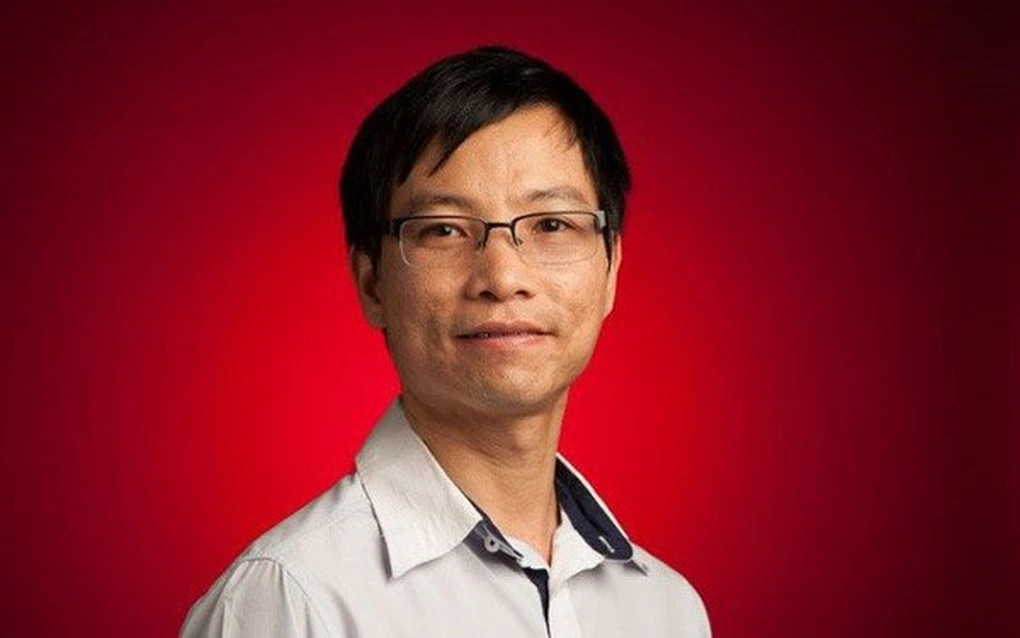
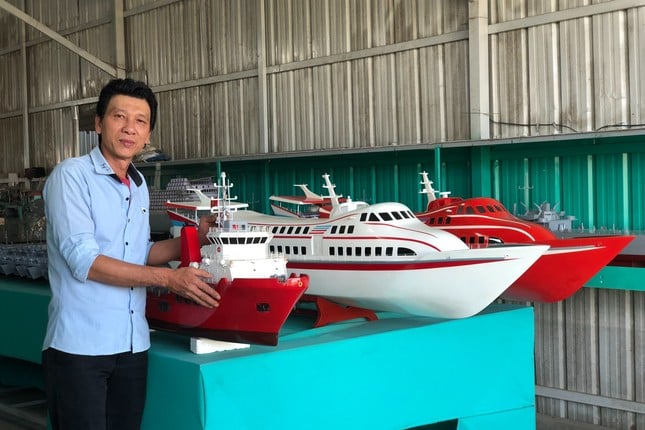

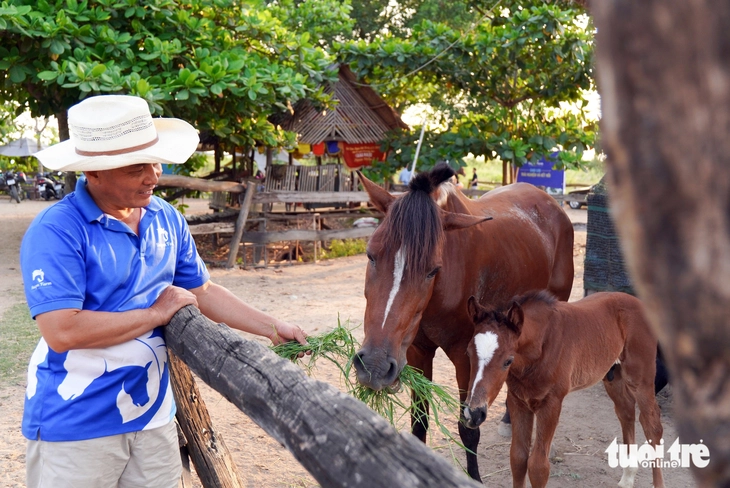
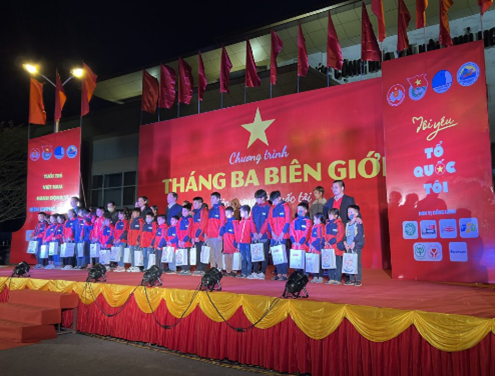

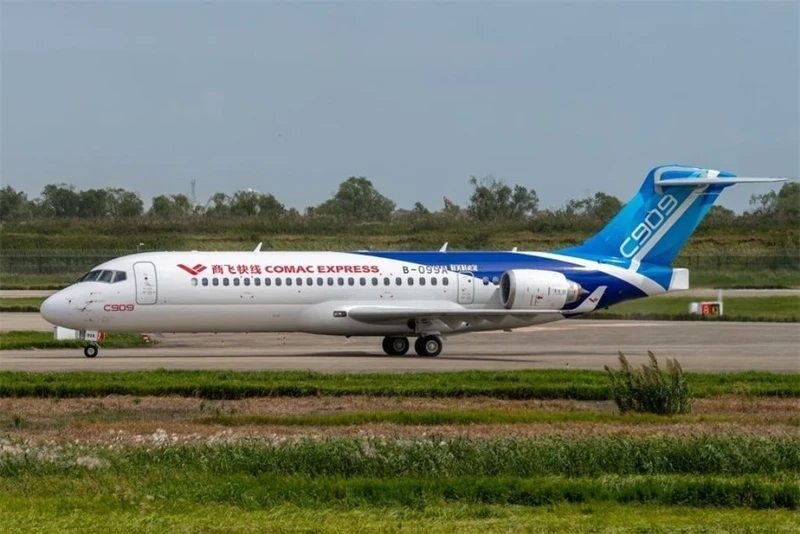


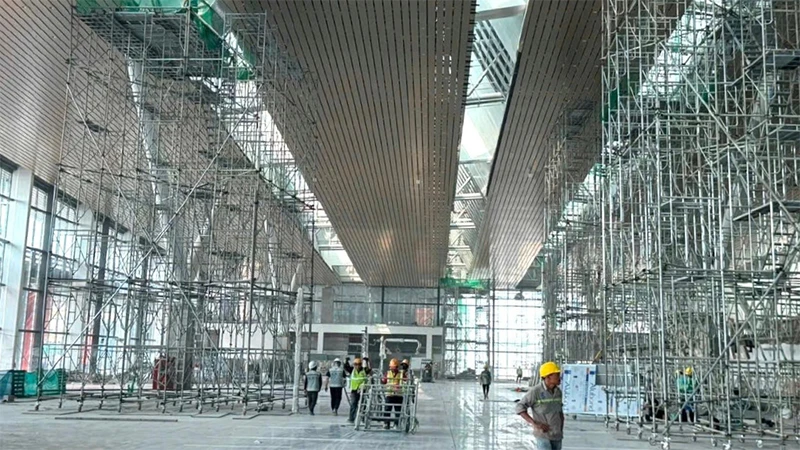


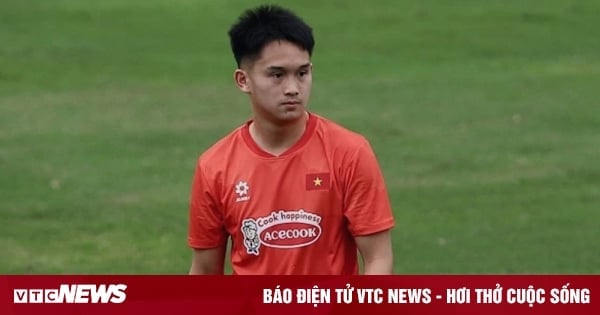


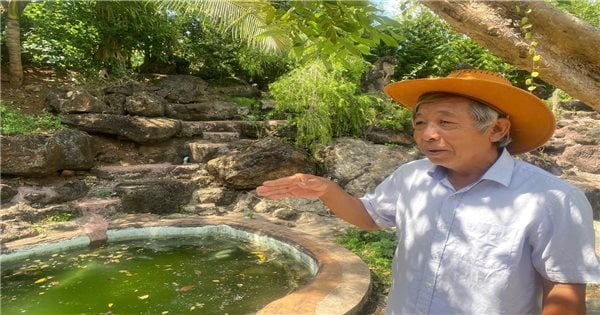
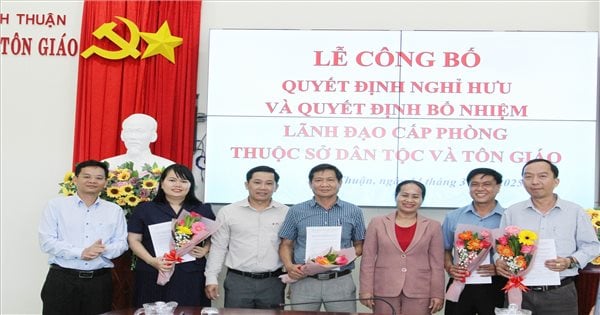
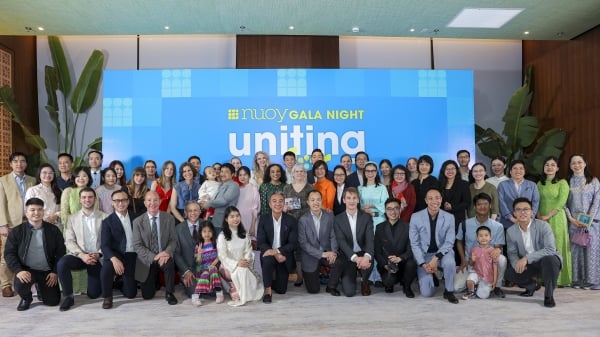



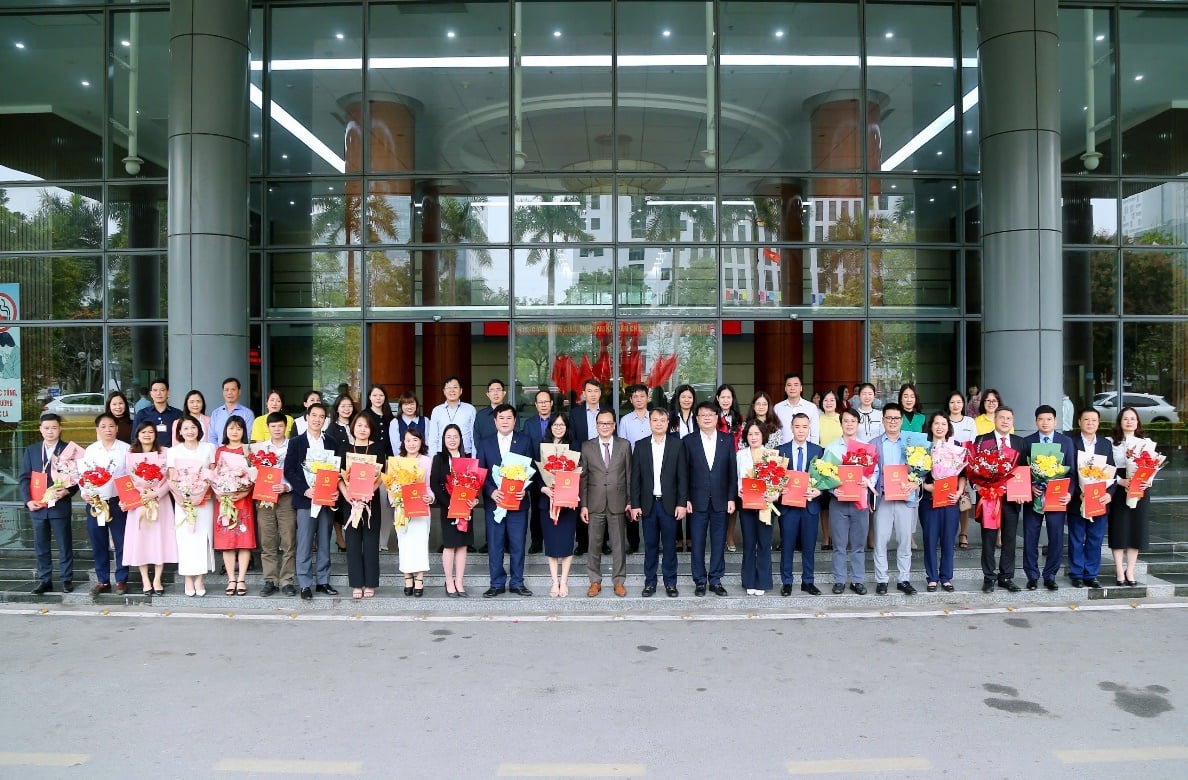


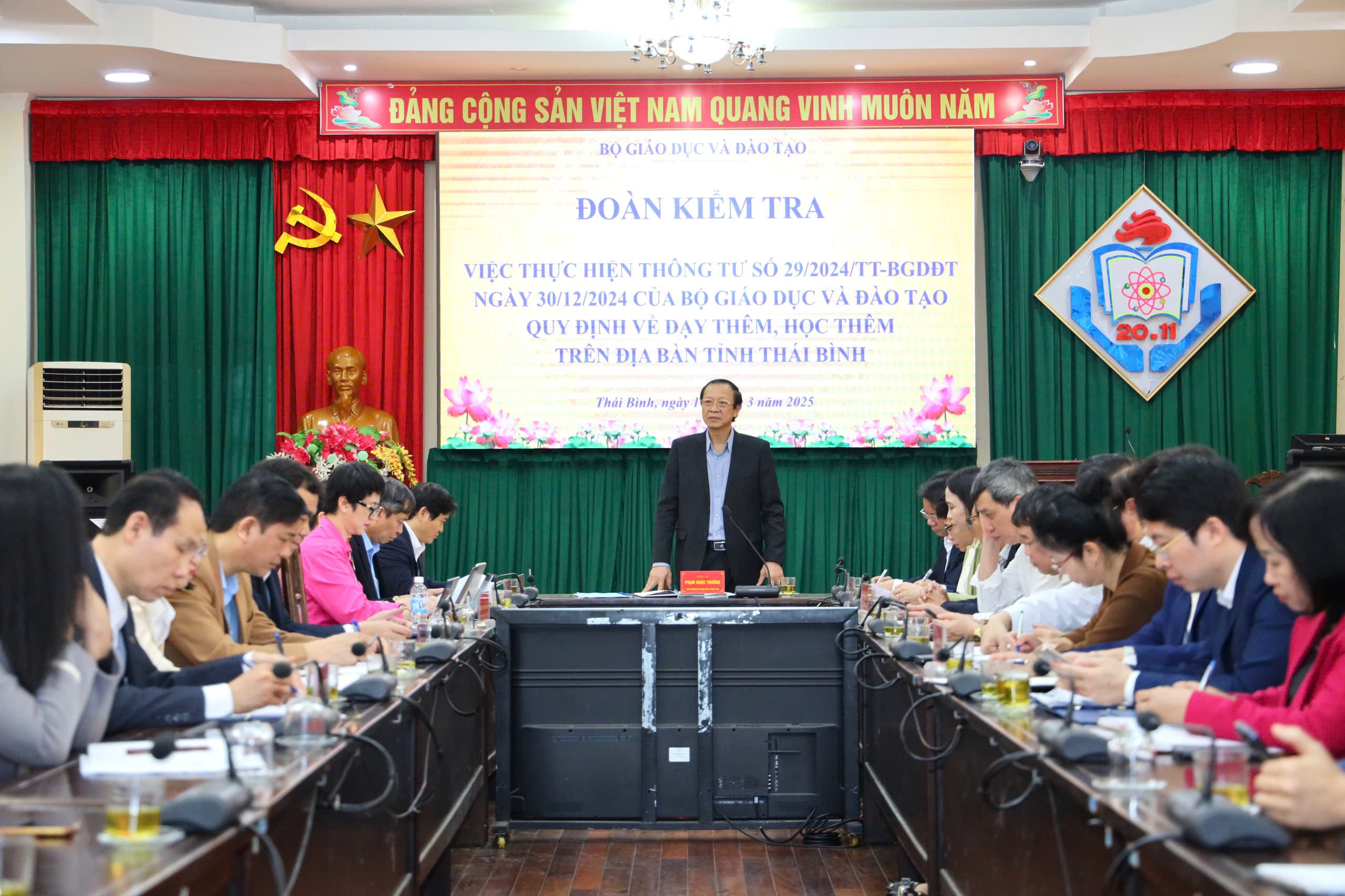

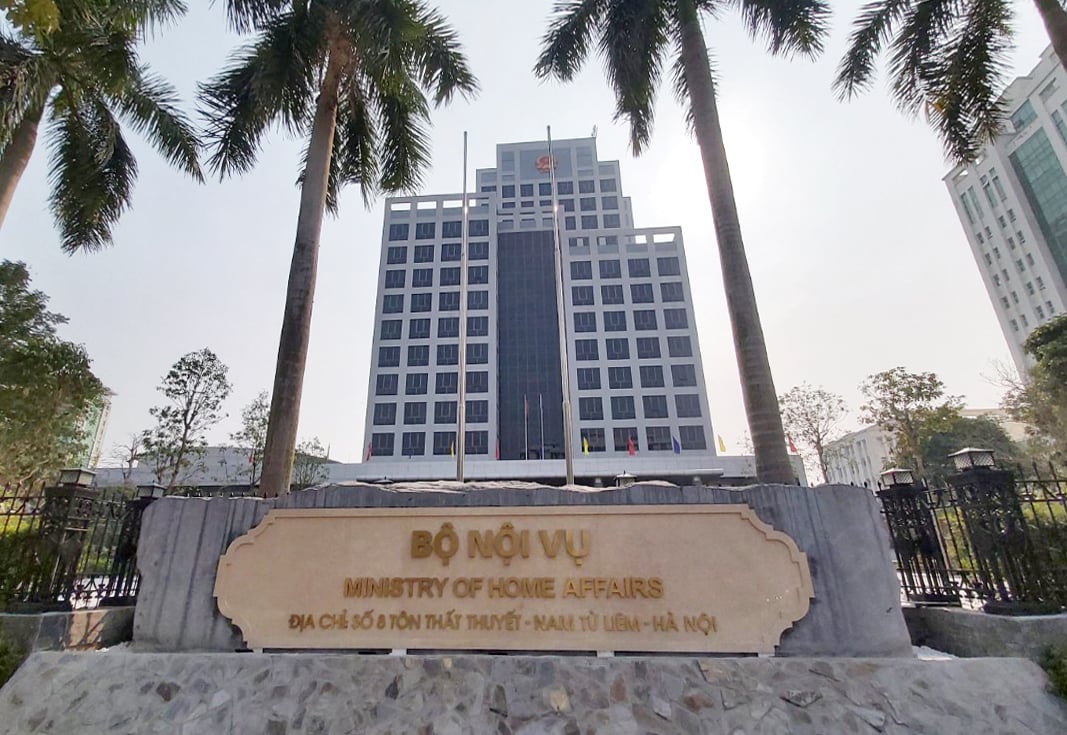

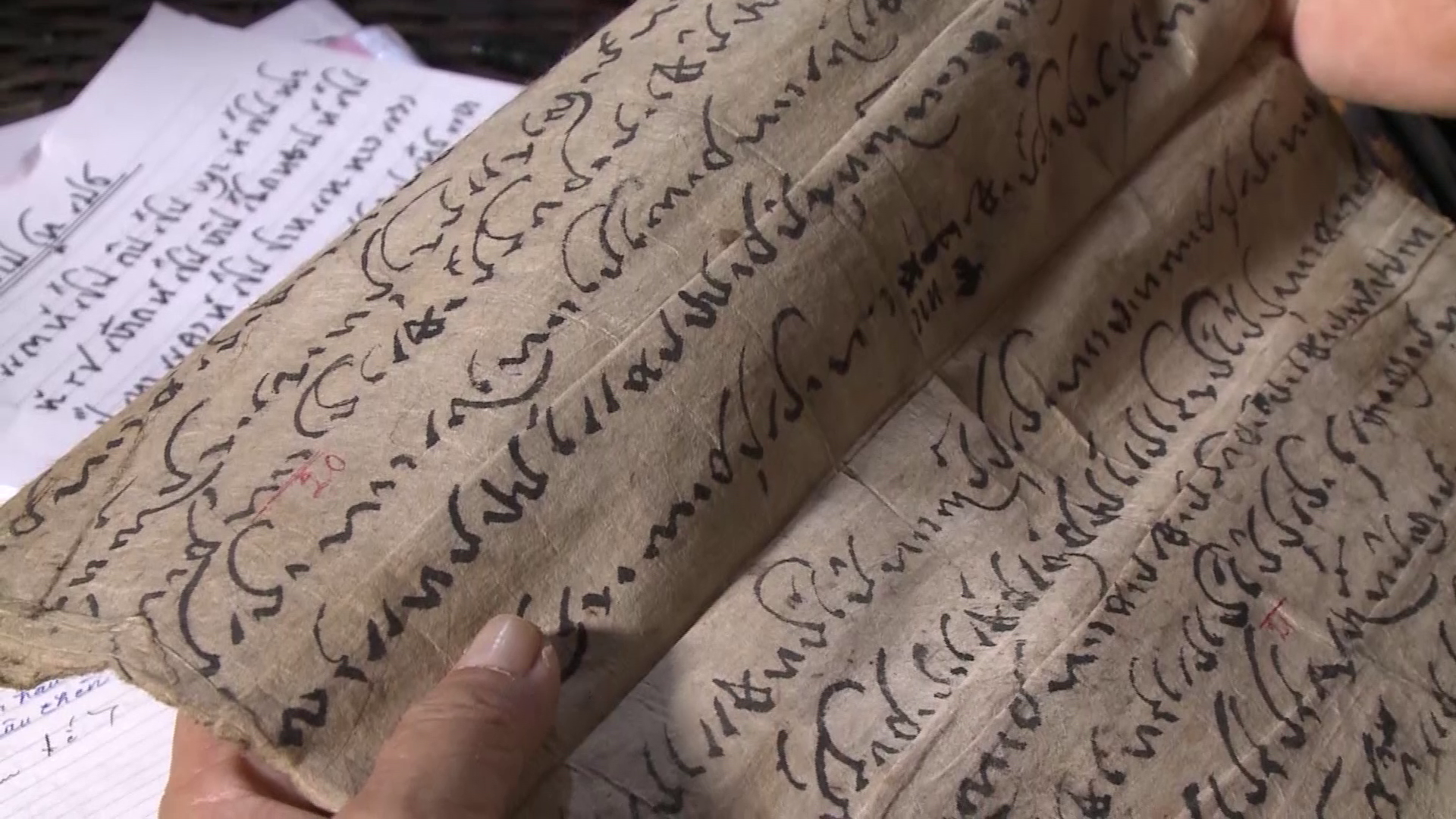

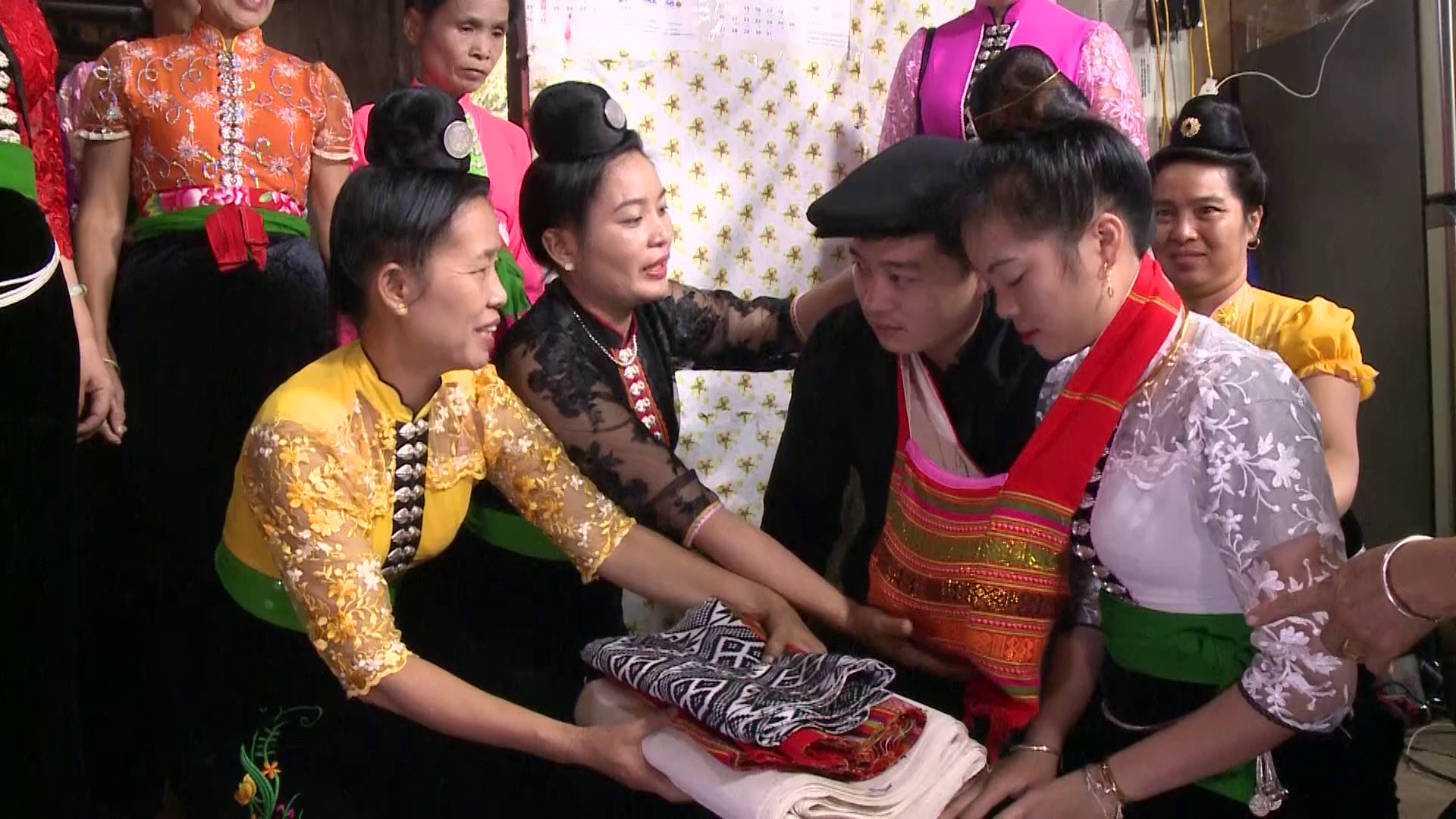

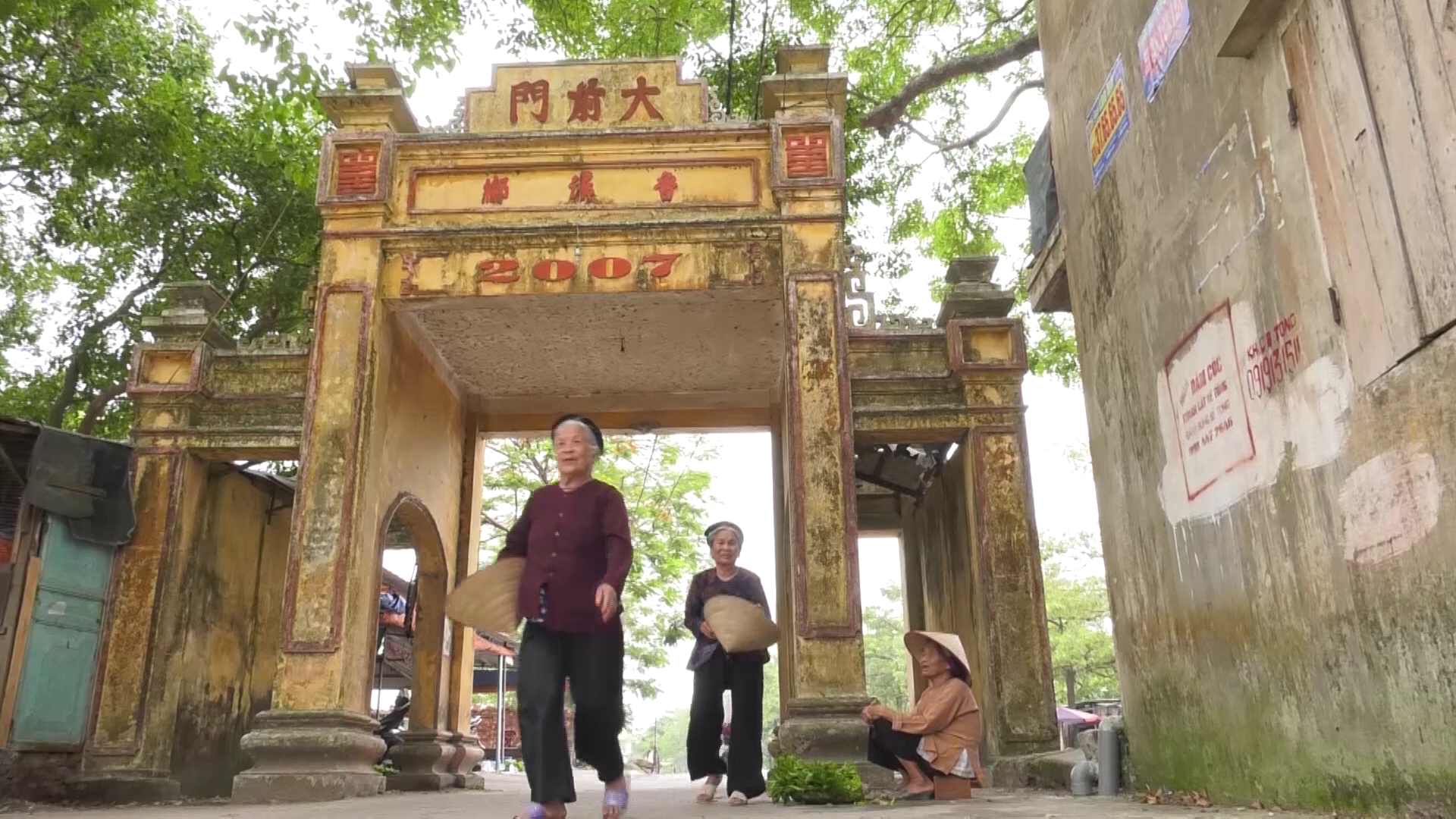



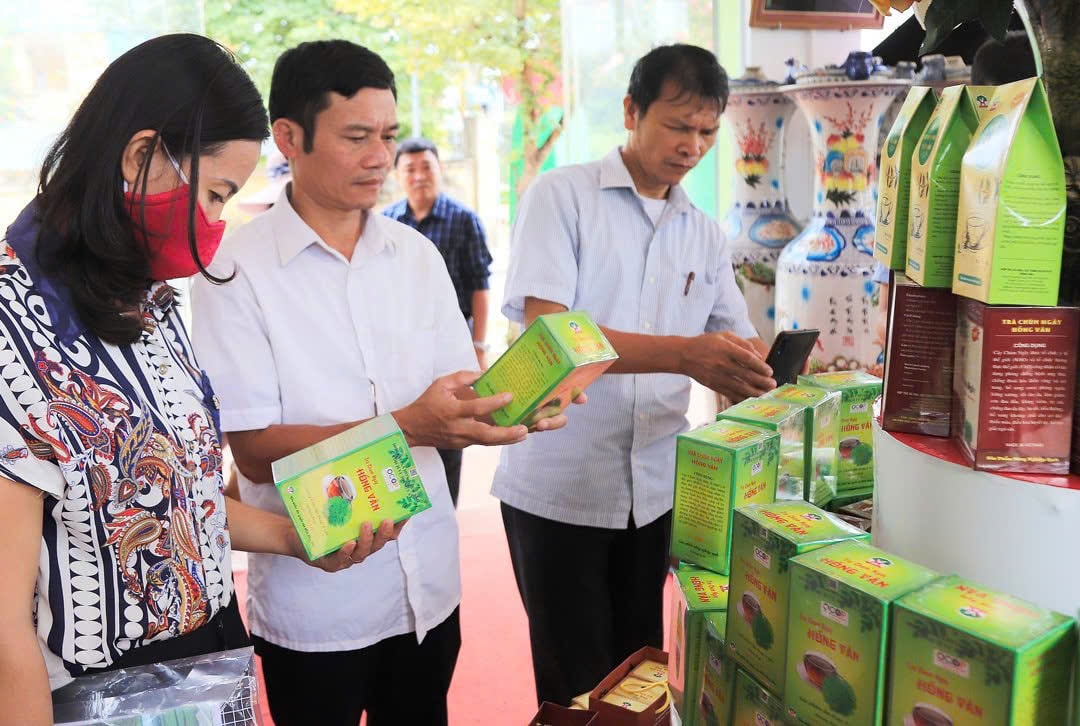
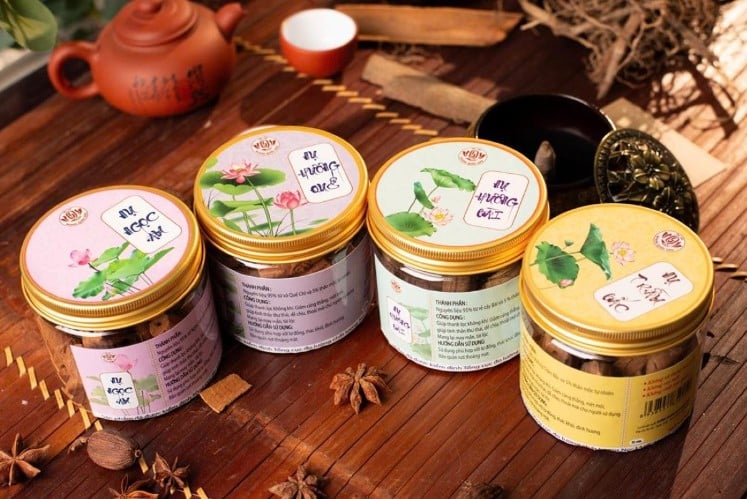


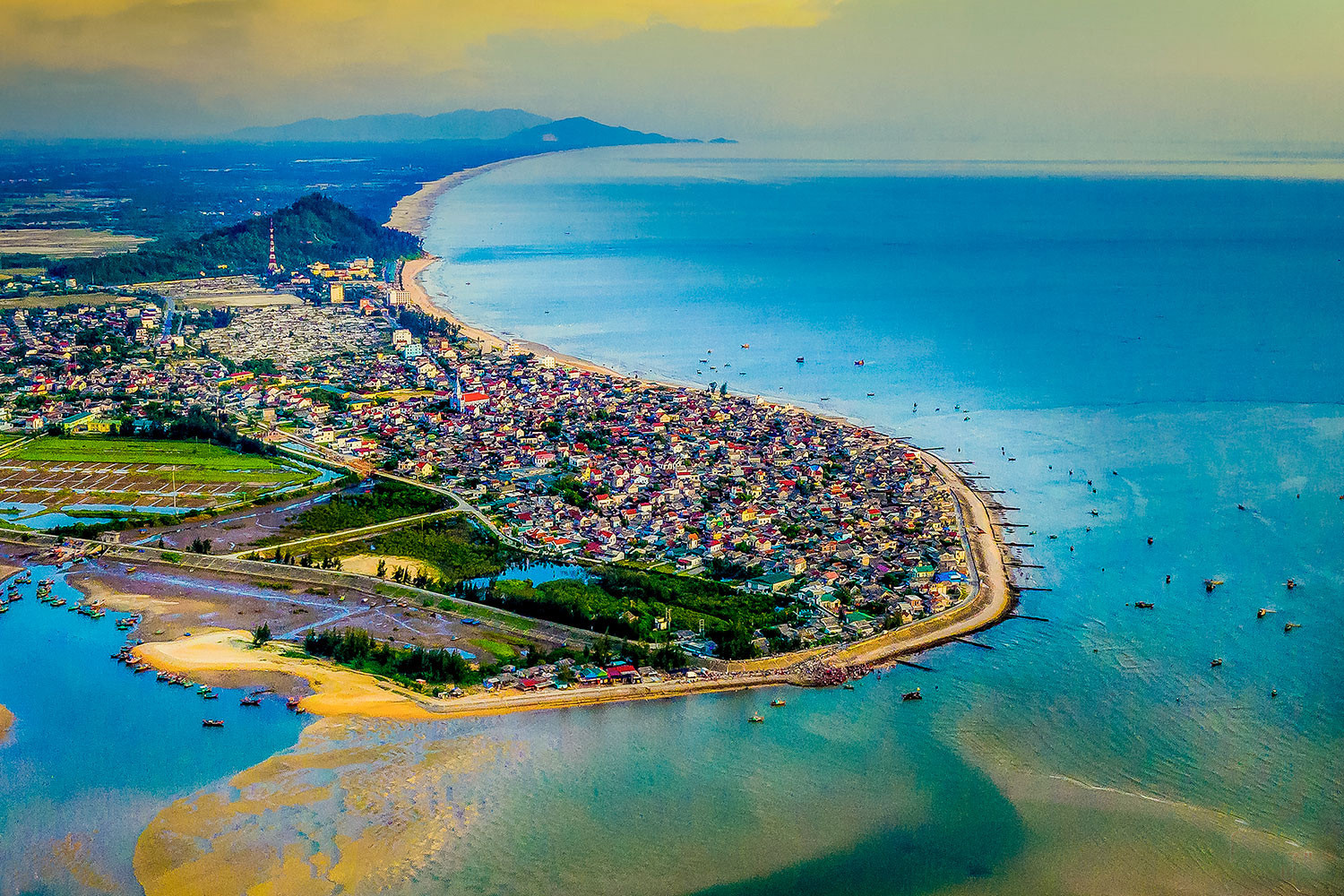
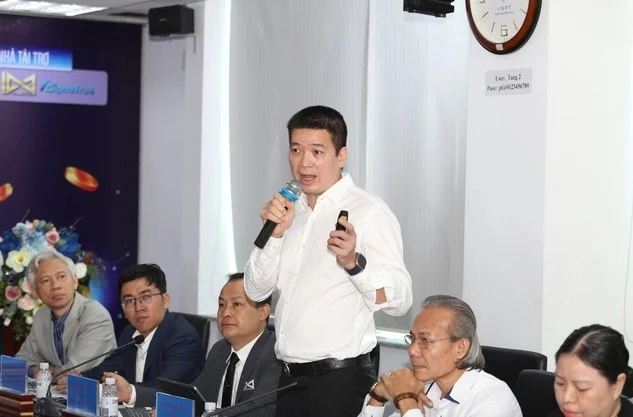
Comment (0)